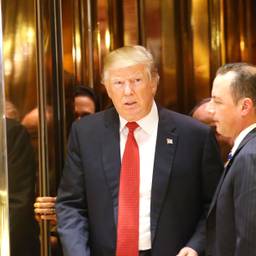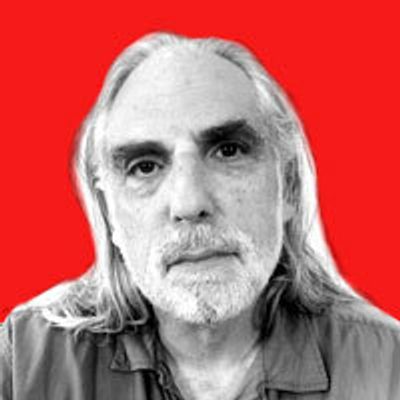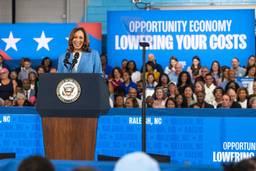The World’s Richest Just Got Extraordinarily More Wealthy—Taxing Them Doesn’t Go Nearly Far Enough
Lessening inequality isn’t the only reason to tax the super rich. We also need to decrease their political power while spending on social programs that benefit the working class.
Max B. Sawicky

In every measurement of economic inequality, personal wealth is found to be more unequal than income. Naturally, this state of affairs invites attention and criticism, along with demands for a reduction of that inequality by various means, including to reduce the stubborn racial wealth gap. The latest World Wealth Report for 2024, published last month by The Capgemini Research Institute, brings this level of inequality into stark relief.
We learn from the report that very high net-worth individuals (“HNWI,” defined as those with at least $1 million of investable assets) have been doing quite well, which is probably not a surprise. Their numbers globally have grown from last year to nearly 23 million, and their wealth has grown to a staggering $87 trillion. (For comparison, in 2023, U.S. Gross Domestic Product was about $27 trillion.)
One million dollars is not actually very much in this world. Two veteran public school teachers or other public sector professionals who escaped misfortune and had the benefit of working and saving during the stock market boom after 1980 could have very well together accumulated $1 million. The report defines “ultra-high net worth” as those with $30 million or more, and the global population of this group grew by 5% while their wealth increased by nearly 4% to more than $29 trillion. The current Bloomberg index of the super-rich finds that 500 people each hold almost $6 billion or more.
You might think that growth in wealth is automatic for the richest people, but that isn’t necessarily so. Since much of their holdings can be tied up in volatile stock market shares, if not more exotic financial instruments, they can have down years too, and 2022 was one such year. It’s not mysterious. If the stock market tanks (as it did in October of 2022), those who own all the stock are the most affected, as far as financial net worth is concerned. Of course, they don’t face eviction or miss any meals.
The rise in wealth of the HNWI crowd in the United States is matched by the increase in their shares of total private wealth, as well naturally as the fall in shares for others. From the end of 2008 to 2023, the share of wealth held by the top tenth of one percent increased from 10.7% to 13.5%. (To be fair, the bottom 50% increased as well.)
The concentration of all this wealth by the richest in society makes the case for a common refrain on the Left: Let’s redistribute it, presumably by taxation. That is an understandable (and moral response), but what I would call a fundamental socialist principle is that collective well-being supersedes the individual, and the greatest avenue for redistribution is through public expenditure, not tax policy reform.
In this context, we ought to reduce individuals’ dependence on personal income or wealth by having more needs served by social means.
People certainly need cash. The U.S. government won’t soon be delivering everyone’s preferred weekly basket of groceries. There will still be the water bill and trips to the gas station. To help subsidize the working class, policies that could go a long way include expanding Social Security as well as ideas like economist Darrick Hamilton’s negative income tax that would provide a direct cash benefit (or income floor) to those facing economic hardship.
Families shouldn’t have to carry the risks of catastrophic medical expenses but rather should be able to take advantage of public insurance that pools that risk, either through a single-payer system, as in Canada, or one where healthcare is simply available to all from public facilities and employees, as in Great Britain. A public commitment transforms healthcare from a household consumer burden into a right, what today is understood here thanks in large part to Bernie Sanders helping popularize the slogan “Medicare for All.”
There are two basic misconceptions about wealth on the U.S. Left. One is that the accumulation of wealth free of taxes deprives other worthy human needs of public resources. Another is that the taxation of wealth or income, as opposed to public expenditure, is vital in promoting greater equality.
Running the numbers, what becomes clear is that heavy taxation of wealth, plus the income of corporations, is insufficient to fill out the typical size of public budgets in social-democratic nations. For that you need something in the range of 35% of GDP. In the United States, the tax share for federal, state and local governments combined is well under 30%. Really-existing social-democracies usually rely on a broader tax base than the U.S. does, and not necessarily with an exclusive reliance on progressive taxation.
The sticky political problem is that the working class, broadly defined, has to be persuaded that more taxes that finance more spending will make them better off. More taxes without more spending appeals to few. The burden for the Left is defending an expansion of spending.
Having said that, one can go too far in insisting that more spending relies solely on more taxes. Deficits make more spending possible too, including for social programs. The long-standing liberal obsession with balanced budgets, now in the form of demands for “pay-fors,” has been a major obstacle to the expansion of non-defense public spending. Mysteriously, defense spending and tax cuts for the wealthy and corporations have always been immune to such deficit concerns.
So is it worth hiking taxes on the rich and corporations? Oh yes, it is. But rather than economics, the chief motivation is to constrain their interference in our politics, which these days goes all the way up to buying their own Supreme Court justices. Readers don’t need to be reminded of the perverse impact that unaccountable “dark money” has on our politics — thanks in no small part to that same right-wing Supreme Court.
A better frame for thinking about wealth is the public capital that exists in the public sector, which includes basic infrastructure that enables the economy to function, such as transportation, water resources, and the power grid, as well as the potential expansion of public enterprises. (There is also the idea of “natural capital” that generates the amenities provided by environmental quality. Lately, of course, awareness has built up that natural capital is more than a matter of nice things, but now a matter of veritable survival of the human race.)
For policy, you need measurement, and measurement of capital, either private or public, is a can of worms. The data is full of holes and conceptual difficulties. Not surprisingly, the wealthy guard information about their holdings from disclosure. Wealth flees offshore in amounts that can only be speculated about (or discovered in leaks like the Paradise Papers). Federal income tax data only makes rough estimates of wealth possible.
When it comes to conceptual difficulties, imagine the uncertainty in accurately gauging the value of a capital asset — plant or equipment — that can deliver a stream of income over the next 30 years. What’s $1,000,000 of income maybe received five years from now worth today? The market price might reveal a value, but tomorrow a different price might reveal a very different one. Which is correct?
Data on public and natural capital are limited because the U.S. suffers from a skinny public sector — there just isn’t much of it. Most public capital is held by state and local governments and consists of roads and school buildings. The federal budget’s annual “Analytical Perspectives” volume used to include an interesting chapter on wealth held by the national government. Alas, somebody decided this subject was no longer of interest and so it was eliminated. All we get is the other side of the ledger — numbers for the national debt.
Only recently has the Bureau of Economic Analysis in the Department of Commerce experimented with accounting pertaining to the environment. The biggest aspect of public capital here is the power of the government to tax the private economy, never fully realized, the exact level of which is undefined. Moreover, assets held by the public sector imply a 100% tax on their returns, since all such returns, either tangible or monetary, automatically accrue to the public. Ownership of any public asset denies the returns of that asset to the private sector. Therefore, it is effectively taxed.
What can be done about gross wealth inequality? It can be taxed, or its accumulation can be restrained. Once it piles up, it’s hard to get at, thanks to the political sway of the wealthy. Sometimes this is referred to as redistribution (taxing after the fact) versus predistribution (restraining accumulation). Both approaches are worth pursuing.
An important source of wealth accumulation is the exploitation of government-granted monopolies, such as drug patents, a subject on which the economist Dean Baker has been prolific. The same goes for copyrights on literary, musical and software production. It’s said that without these anti-competitive incentives, we would get no new inventions or other creative output. But if a copyright or patent runs for 50 years, do we really think shortening it to 30 will discourage the creator from working to be very rich, instead of insanely rich? Does Mark Twain, dead for 114 years, still want circulation of his books to be restricted by copyright? Did Jimi Hendrix want to forbid use of his music in the film made of his life? The recent pursuit of anti-trust policy has been one of the bright spots of the Biden administration. It is not hard to imagine its fate under a restored Trump regime.
Contrary to dogmas of free enterprise, restrictions of competition in U.S. economic history are legion. The robber barons didn’t want competition. Steve Jobs got richer by subjecting his workers to noncompete agreements. Would he have left his inventions in the garage upon learning that, decades later, he would not be able to corral his engineers into permanent employment status?
Sometimes the restrictions on competition are outsourced. When our trade policy facilitates movement of manufacturing to nations where labor is suppressed, there is no “free enterprise” in operation. Workers in such places do not have easy options to escape exploitation. In fact, the “market exit” touted in our elementary economics textbooks (that I am guilty of teaching myself as a pillar of competitive markets) is often constrained for workers in the United States. Rather than encouraging a race to the bottom, trade and labor policy should prioritize protections and regulations that help workers and the environment.
When it comes to the Black-white wealth gap, a superficial form of anti-racism may view eliminating that gap as a move toward more equality. As writer and thinker Adolph Reed convincingly points out, however, we ought to aspire to more than ensuring that wealth and poverty are race-neutral. Better to focus on the sources of inequality, which entails raising the bottom and lowering the ceiling for everyone.
Still, the size of that gap is not a trivial matter for people of color. For instance, policy analyst Matt Bruenig shows that most of the Black-white gap is due to the top 10% of each group, but also estimates the gap for the bottom 50% of whites and Black people to be around $23,000. For a low-income family, that’s a lot of money! It wouldn’t go very far in retirement, but it could make the difference in defraying a sudden medical expense, an eviction, the breakdown of the family car or the demise of a major appliance. Remedying this racial wealth gap would have real benefits for people of color.
What about taxing wealth itself? It is seldom done, but it can be. One benefit is that even a very small wealth tax would provide useful information to the government on individuals’ finances. Taxpayers could be required to provide comprehensive information on their holdings, facilitating enforcement not just of a wealth tax but of the federal individual income tax as well. Presently about one in every seven dollars in income tax are not paid on time, or ever.
As noted, a major benefit of a wealth tax is not in the revenue collected, but in the wealth that the very rich are deprived of, reducing their opportunities for political mischief. That revenue is not needed to finance socialism.
We already have wealth taxation to some extent, in the form of property taxes under state and local governments. Absent serious federal support for that sector, it would be better not to poach on one of their most important revenue sources. Moreover, the national government is not well-situated to gauge property values in a myriad of localities.
What about spending? We recently got a hint of what works from President Biden’s anti-recession initiatives, interrupted by the Republican takeover of the House of Representatives in 2023. The expanded Child Tax Credit (CTC) was shown to cut child poverty by half. The extended unemployment benefits provided during the first year of his administration are thought to have been a significant help in reviving economic growth by propping up households’ consumer spending. Stimulus checks were very popular and buoyed those at the lowest rungs of the economic ladder.
The spectacular growth in employment under Biden since the Covid recession is by now well-known (except possibly by many voters). If a fully Democratic Congress (under a Democratic president) decided to let Trump’s tax cuts for the rich expire, it could signal political space for new spending, potentially including a renewal of the expanded CTC. The rest of the Build Back Better omnibus could also be back on the table, juicing up a wide panoply of domestic spending programs. Medicare could be expanded to include dental, hearing and vision benefits. Obamacare could make families eligible in a wider range of incomes. If the Trump fever abates, the few hold-out states may even finally accede to Obamacare’s expansion of Medicaid. All this would do more to alleviate inequality than simply greater taxation of the rich.
In any case, the wealth of high net-worth individuals is ripe for the plucking via taxation. It is the humane alternative.
Max B. Sawicky is an economist and writer in Virginia, formerly with the Government Accountability Office and the Economic Policy Institute. He is a Senior Research Fellow at the Center for Economic and Policy Research and runs the MaxSpeak, You Listen! blog at sawicky.substack.com.











